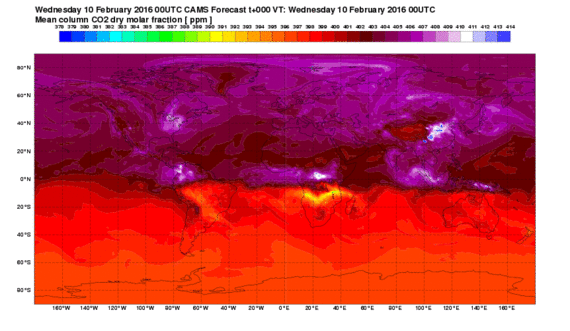- December 9, 2015
- in Green Tips
- by marcos
- 535
- 0

The Paris Climate Summit is the first test for the global community to show that it is serious about the implementation of the new Sustainable Development Agenda. Climate change is a grave threat to our planet and if not stopped, it will also make the achievement of the other SDGs hard, if not impossible.
Exchanging information and knowledge across regions on good practices and innovations to combat climate change is important. I believe that in the Nordic experience a key aspect is the collaboration and trust between governments, the civil society, private sector and research community.
Citizens in the Nordic countries are educated and active, and public space and goods are appreciated. Environmental education is part of the basic curriculum in schools. From early on, the citizenry is conscious of ecological concerns. Nordic countries have taken active steps both in terms of binding regulation, active support for scientific research as well as in the form of support for voluntary measures to activate citizens to play their part in reducing emissions as well as to deal with the consequences of climate change.
The choices private citizens make as consumers in their everyday life is significant. Avoiding excess consumption is the first step. How people eat, their housing preferences and mobility choices make a difference. Dietary habits such as eating less red meat and more vegetables, and the purchase of locally produced seasonal foods, as well as the avoidance of food waste is possible for all of us. Promoting public transport as alternative to the private car and energy-efficient solutions in housing and in construction in general contribute considerably. Being privately conscious and socially active is good climate policy. However, some choices are individual, but others need to be made collectively.
Already half of the world’s population lives in cities, which produce 75 percent of both the GDP and of emissions. By 2050, about 70% will call cities their home. This is why cities and urban lifestyles are both a key challenge and a solution. In the Nordic welfare-state model, local governments are the prime providers of basic services. In Finland, more than half of the taxes are paid to municipalities. Most municipalities are majority shareholders in local waste management and energy utilities. As energy production is the biggest source of CO2 emissions, political pressure makes the utilities gradually shift to renewables, biomass in particular.
Integrated land use and mobility planning is firmly in the hands of local decision-makers, and plans are assessed by sustainability criteria, CO2/GHG emissions in particular. Mobility is considered a service provided by urban infrastructure. The share of private cars is only 30 percent of trips made within the city of Helsinki. Copenhagen is admired as an example for how to plan for cyclists. A tight network of safe cycling routes is currently being built also in Helsinki, and people are discovering biking as a fun and easy means to get around.
Nordic cities strive toward carbon neutrality, with Copenhagen having set the most ambitious targets. Its commitment builds on a number of solutions, focusing on decarbonizing the energy systems of the city by continuing to invest in biomass, wind, geothermal, and solar solutions. The benefits of district heating and cooling systems have been widely demonstrated also elsewhere in the Nordic countries.
Developing renewable energies from waste is another interesting field where innovative solutions have been developed. The Finnish company Neste Oil develops fuel production based on microbial oil, which uses straw and animal fat as raw material. Forest industries use their waste for energy, as well. Capturing the methane emissions from waste deposits is a further good example. One could conclude that waste is not waste anymore, but it has turned to raw material for further production.
Gender equality and women’s role as producers and consumers has to also be highlighted. Women need to be involved as decision makers and educated and empowered because their impact on climate efforts is considerable as producers and consumers. Women still make most of the decisions for example with regards to household purchases. We should therefore expect the Paris agreement to include strong gender provisions to ensure gender equality and the full and equal participation of women in all climate actions.
This post is part of a “Nordic Solutions” series produced by The Huffington Post, in conjunction with the U.N.’s 21st Conference of the Parties (COP21) in Paris (Nov. 30-Dec. 11), aka the climate-change conference. The series will put a spotlight on climate solutions from the five Nordic countries, and is part of our What’s Working editorial initiative. To view the entire series, visit here.
— This feed and its contents are the property of The Huffington Post, and use is subject to our terms. It may be used for personal consumption, but may not be distributed on a website.


